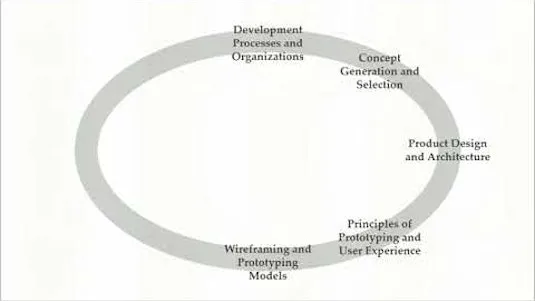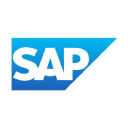
Product Design Prototyping and Testing 
This course provides an overview of the product design process, from prototyping to testing. It covers the fundamentals of user experience design, and how to create an iterative process to ensure the best product design and development. Students will learn how to create a product that meets customer needs and expectations. ▼
ADVERTISEMENT
Course Feature
![]() Cost:
Cost:
Free
![]() Provider:
Provider:
Edx
![]() Certificate:
Certificate:
Paid Certification
![]() Language:
Language:
English
![]() Start Date:
Start Date:
23rd Jun, 2021
Course Overview
❗The content presented here is sourced directly from Edx platform. For comprehensive course details, including enrollment information, simply click on the 'Go to class' link on our website.
Updated in [March 06th, 2023]
This course provides an overview of product design prototyping and testing. Students will learn key design thinking principles such as personas, story mapping, and prototyping. They will also gain an understanding of product designer tools and processes, and how to combine them with good scrum processes. Additionally, students will learn how to transition from ideas to prototyping and concept testing of their products and services. The course will also cover topics such as design methods, modeling and simulation, material and manufacturing process selection, platform and modular design, mass customization, planning and scheduling. By the end of the course, students will have the knowledge and skills to create great products that don’t sacrifice design for functionality or feasibility.
[Applications]
The application of this course can be seen in the development of products and services. Students can use the principles of design thinking, story mapping, and prototyping to create products and services that are tailored to the needs of customers and users. Additionally, students can use the knowledge gained from this course to create products and services that are cost-effective and efficient. Furthermore, students can use the principles of concurrent engineering, design for manufacturing, industrial design, and the business of new product development to create products and services that are marketable and profitable.
[Career Paths]
Job Position Paths:
1. Product Designer: Product designers are responsible for creating the look and feel of a product, from concept to completion. They must have a strong understanding of user experience, design principles, and the latest technologies. Product designers must be able to think creatively and strategically, and be able to communicate their ideas effectively.
2. User Experience Designer: User experience designers are responsible for creating a positive user experience for a product or service. They must have a deep understanding of user needs and behaviors, and be able to create designs that are both intuitive and engaging. They must also be able to collaborate with other designers and developers to ensure that the product meets the user’s needs.
3. Prototyping Engineer: Prototyping engineers are responsible for creating prototypes of products and services. They must have a strong understanding of engineering principles and be able to create prototypes that are both functional and aesthetically pleasing. They must also be able to collaborate with other engineers and designers to ensure that the product meets the user’s needs.
4. Product Testing Engineer: Product testing engineers are responsible for testing products and services to ensure that they meet the user’s needs. They must have a strong understanding of engineering principles and be able to create tests that are both effective and efficient. They must also be able to collaborate with other engineers and designers to ensure that the product meets the user’s needs.
Developing Trends:
1. Design Thinking: Design thinking is a process of creative problem solving that focuses on understanding the user’s needs and creating solutions that meet those needs. Design thinking is becoming increasingly important in product design and development, as it allows for a more iterative and user-centric approach to product design.
2. Agile Development: Agile development is a process of iterative development that focuses on delivering working software quickly and efficiently. Agile development is becoming increasingly important in product design and development, as it allows for a more iterative and user-centric approach to product design.
3. User Research: User research is the process of understanding user needs and behaviors in order to create better products and services. User research is becoming increasingly important in product design and development, as it allows for a more user-centric approach to product design.
4. Automation: Automation is the process of using technology to automate tasks and processes. Automation is becoming increasingly important in product design and development, as it allows for a more efficient and cost-effective approach to product design.
[Education Paths]
1. Bachelor of Science in Product Design: This degree program focuses on the development of products from concept to production. Students learn how to create innovative products that meet customer needs and market demands. They also learn how to use design tools and techniques to create prototypes and test them for usability. This degree program also covers topics such as product design theory, product development, manufacturing processes, and product marketing.
2. Master of Science in Industrial Design: This degree program focuses on the design of products and services for the industrial sector. Students learn how to create products that are both aesthetically pleasing and functional. They also learn how to use design tools and techniques to create prototypes and test them for usability. This degree program also covers topics such as product design theory, product development, manufacturing processes, and product marketing.
3. Master of Science in Human-Computer Interaction: This degree program focuses on the design of user interfaces for digital products and services. Students learn how to create user-friendly interfaces that are both aesthetically pleasing and functional. They also learn how to use design tools and techniques to create prototypes and test them for usability. This degree program also covers topics such as user experience design, user interface design, usability testing, and user research.
4. Master of Science in Design Thinking: This degree program focuses on the development of innovative products and services through the use of design thinking. Students learn how to use design thinking principles to create products and services that meet customer needs and market demands. They also learn how to use design tools and techniques to create prototypes and test them for usability. This degree program also covers topics such as design thinking theory, product development, user experience design, and product marketing.
Course Provider

Provider Edx's Stats at AZClass
Discussion and Reviews
0.0 (Based on 0 reviews)
Explore Similar Online Courses

How to use Canva Tutorials for Beginners

Quantum Mechanics for Engineers

Python for Informatics: Exploring Information

Social Network Analysis

Introduction to Systematic Review and Meta-Analysis

The Analytics Edge

DCO042 - Python For Informatics

Causal Diagrams: Draw Your Assumptions Before Your Conclusions

Whole genome sequencing of bacterial genomes - tools and applications

SAPs UX Strategy in a Nutshell by Sam Yen

Creating Business Value with User Experience

Copywriting: Improve User Experience One Word at a Time
 Related Categories
Related Categories
Quiz
 Submitted Sucessfully
Submitted Sucessfully
1. What is the main focus of the course?
2. What is the old paradigm of design?
3. What topics are covered in the course?


Start your review of Product Design Prototyping and Testing